Tom's Guide Verdict
Get the Vuze XR if you're looking for a camera that can take both stereoscopic and 360-degree photos and video.
Pros
- +
Easy to use
- +
Clearly marked icons
- +
Takes very good photos and video
- +
Well-designed
Cons
- -
Can't view highest-resolution content in mobile app
- -
Limited features in desktop app
- -
Struggles in low light
Why you can trust Tom's Guide
What's a more immersive experience? A 3D image that lets you really see the depth of a scene as it is in real life, or a 360-degree image where you can see everything around you? Whatever your preference, the Vuze XR can accommodate you.
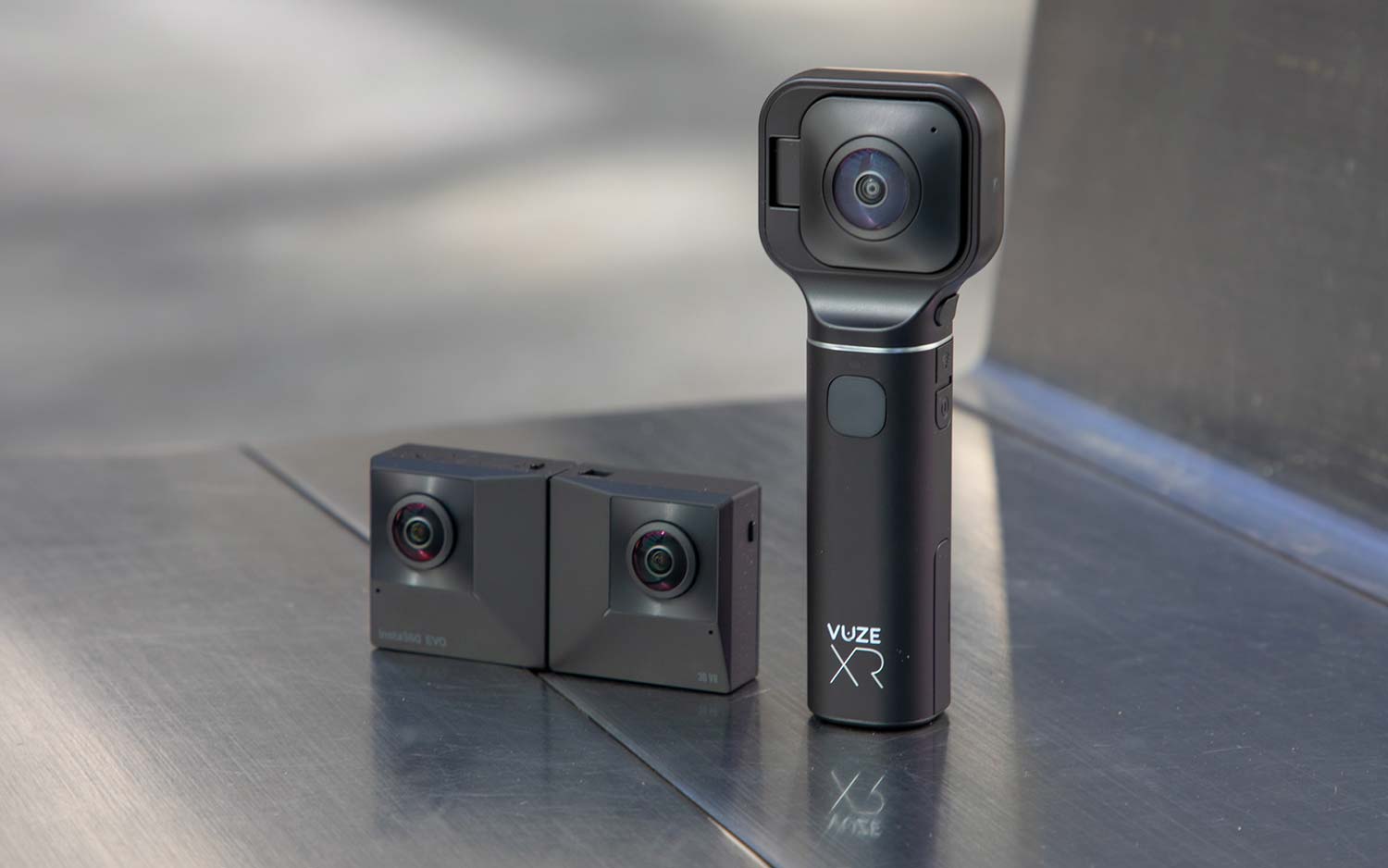
This $439 device has two cameras that fold in and out to take both formats, and even lets you livestream video to social networks. While its app could use some tweaking, the design of the Vuze XR makes it one of the best 360 cameras you can get — especially if you want to take more than just 360 images.
Design
The Vuze XR looks like a high-tech lollipop. Two cameras at its bulbous top connect to a hand grip with four buttons that control all of the Vuze XR's functions: Power (which also lets you switch between still images and video), Wi-Fi, and Record.
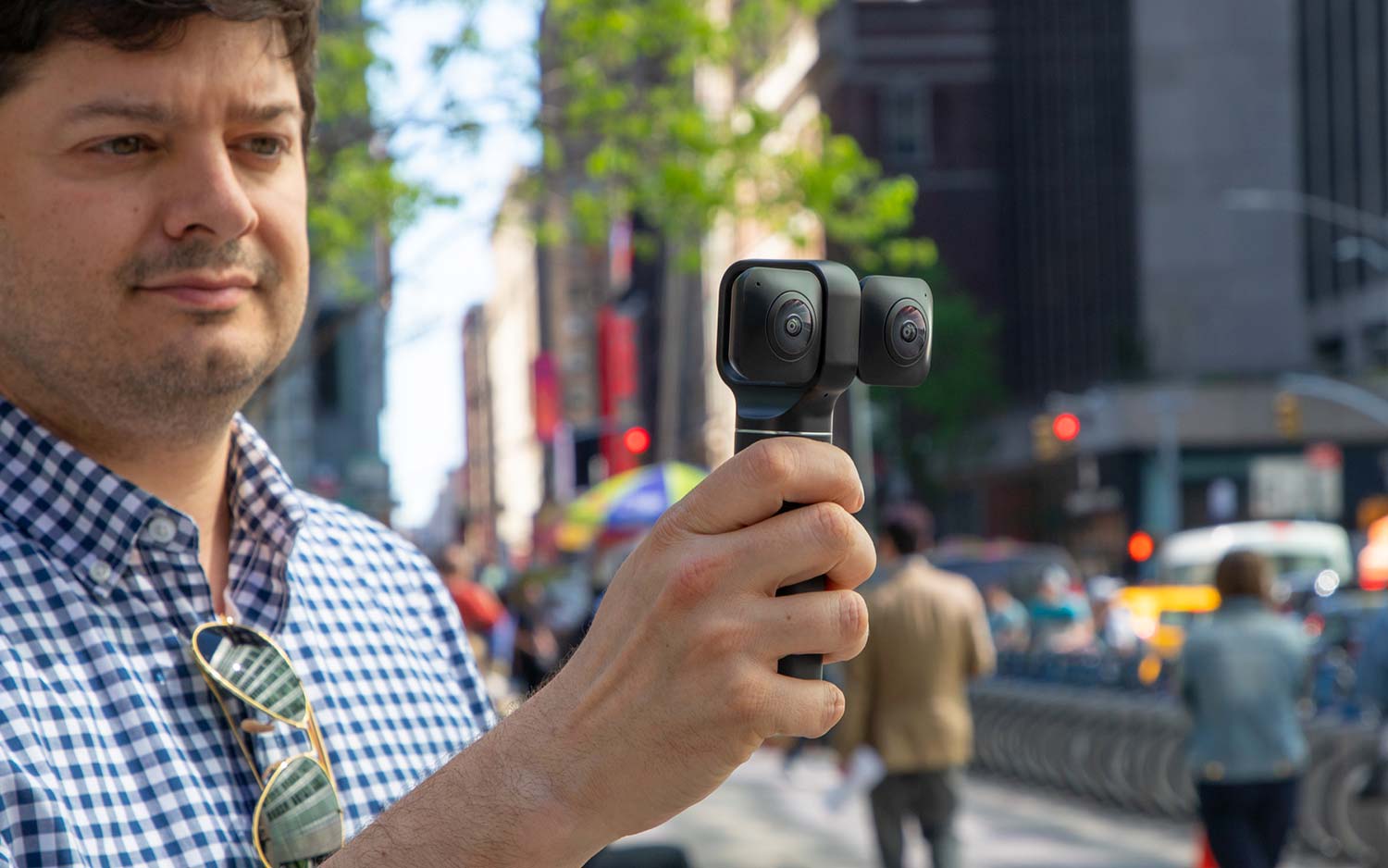
The fourth button causes the two cameras to pop out from their housing, converting the Vuze from a 360- to stereoscopic mode. On the frame are large LEDs beneath icons for photo, video and livestreaming, which were easy to see in all circumstances.
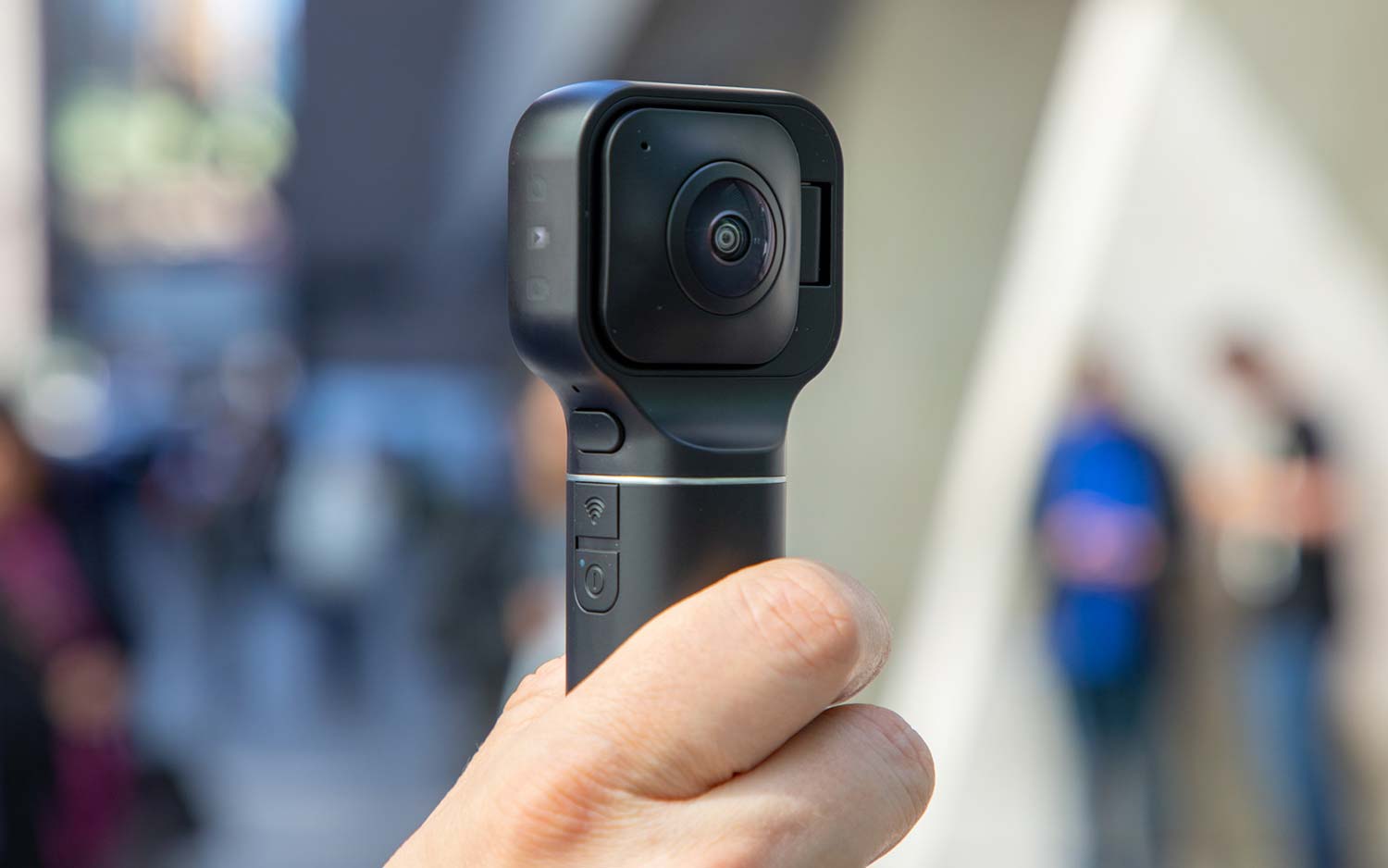
Compare this to the Insta360 EVO, which requires a selfie stick, has a trickier system to switch from 360 to stereoscopic modes and has very small LEDs and icons, which makes it harder to see what mode you're in.
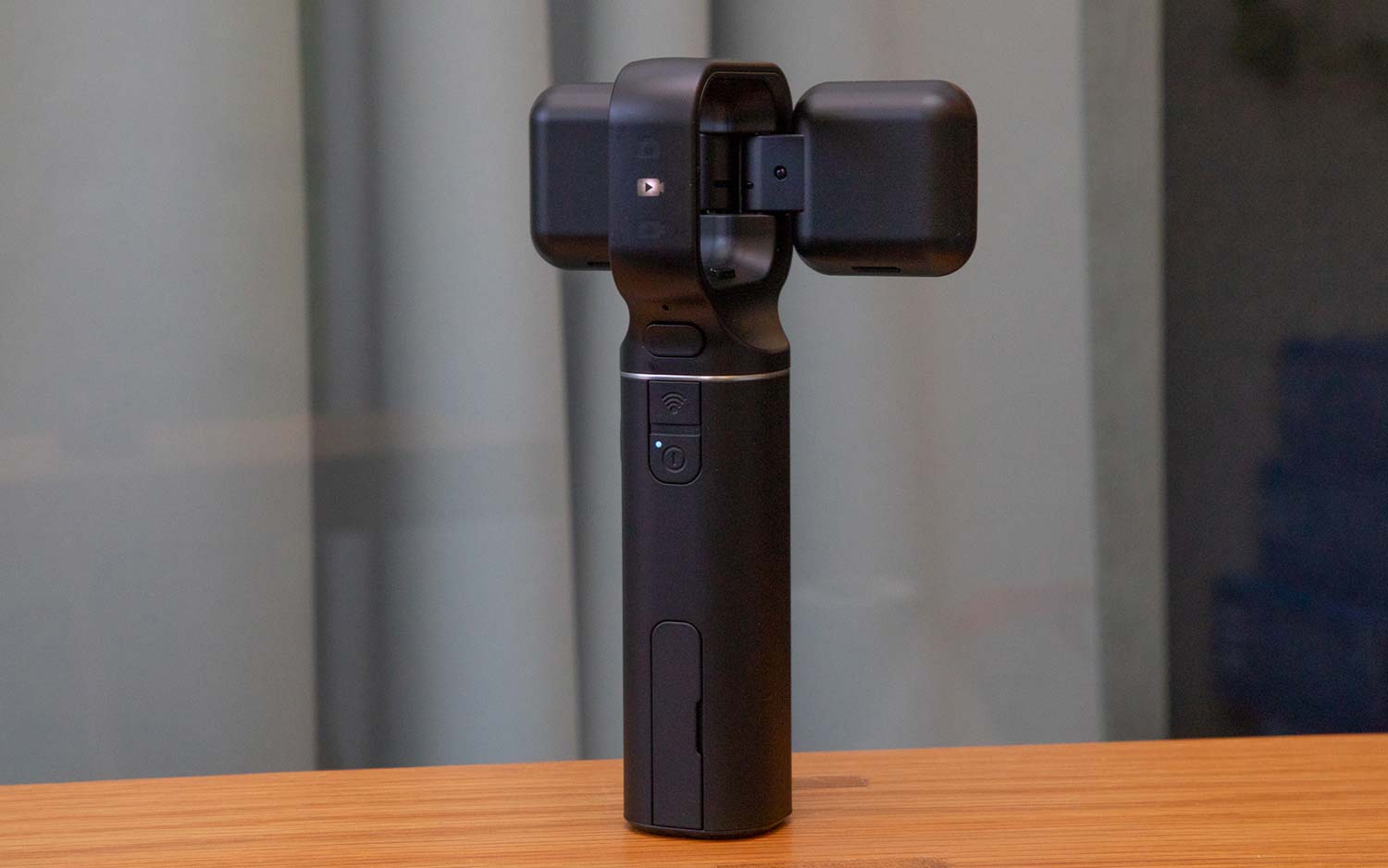
At the bottom of the Vuze XR is a tripod screw mount and a plastic door that covers a USB-C port and a microSD card slot.
| Row 0 - Cell 0 | Insta360 EVO | Vuze XR |
| Price | $419 | $439 |
| Camera Aperture | f/2.2 | f/2.4 |
| Max Video Resolution | 5.7K/30 fps (360)2880p x 2880p (180 degrees) | 5.7K/30 fps (360 degrees)2880p x 2880p (180 degrees) |
| Max Photo Resolution | 18 MP | 18 MP |
Image Quality
The Vuze XR's only real competition is the Insta360 EVO, which can also convert from stereoscopic to 360 mode. Both cameras can take 18MP photos and videos up to 5.7K in resolution. Both were good, but one was better.
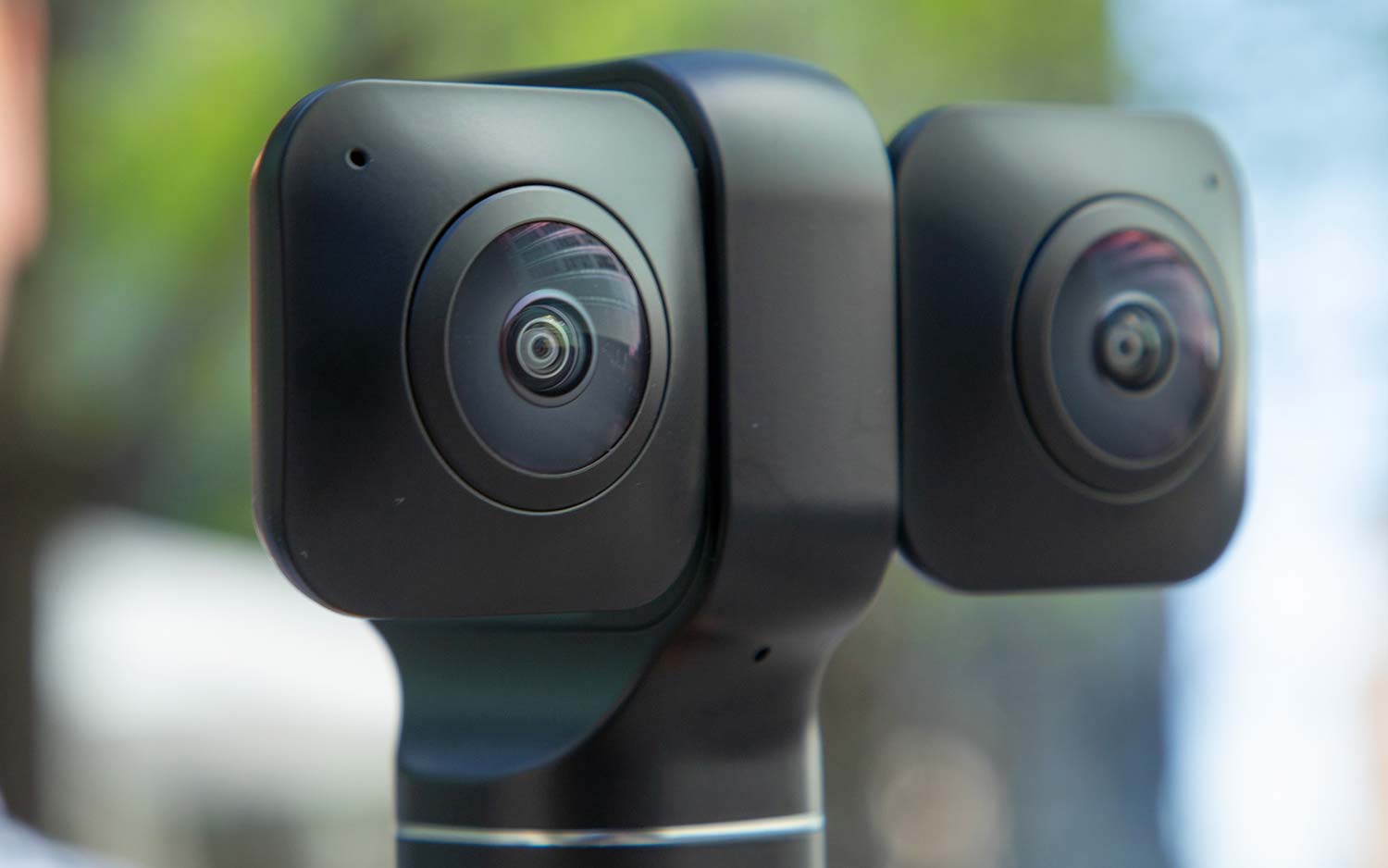
I took the cameras to the top of The Vessel, a new copper-clad sculpture in New York that resembles a giant beehive or shawarma, depending on your cultural perspective.
The Vuze XR's cameras captured the scene accurately, and did a good job with the varying brightness of the scene, from the pale blue sky to the dark bottom of the Vessel. The only area that was blown out was the setting sun behind my shoulder. And although my face was in the shadows, I was pleasantly surprised that I could still see my features clearly. Insta360's EVO also performed well here, producing images on a par with the Vuze.
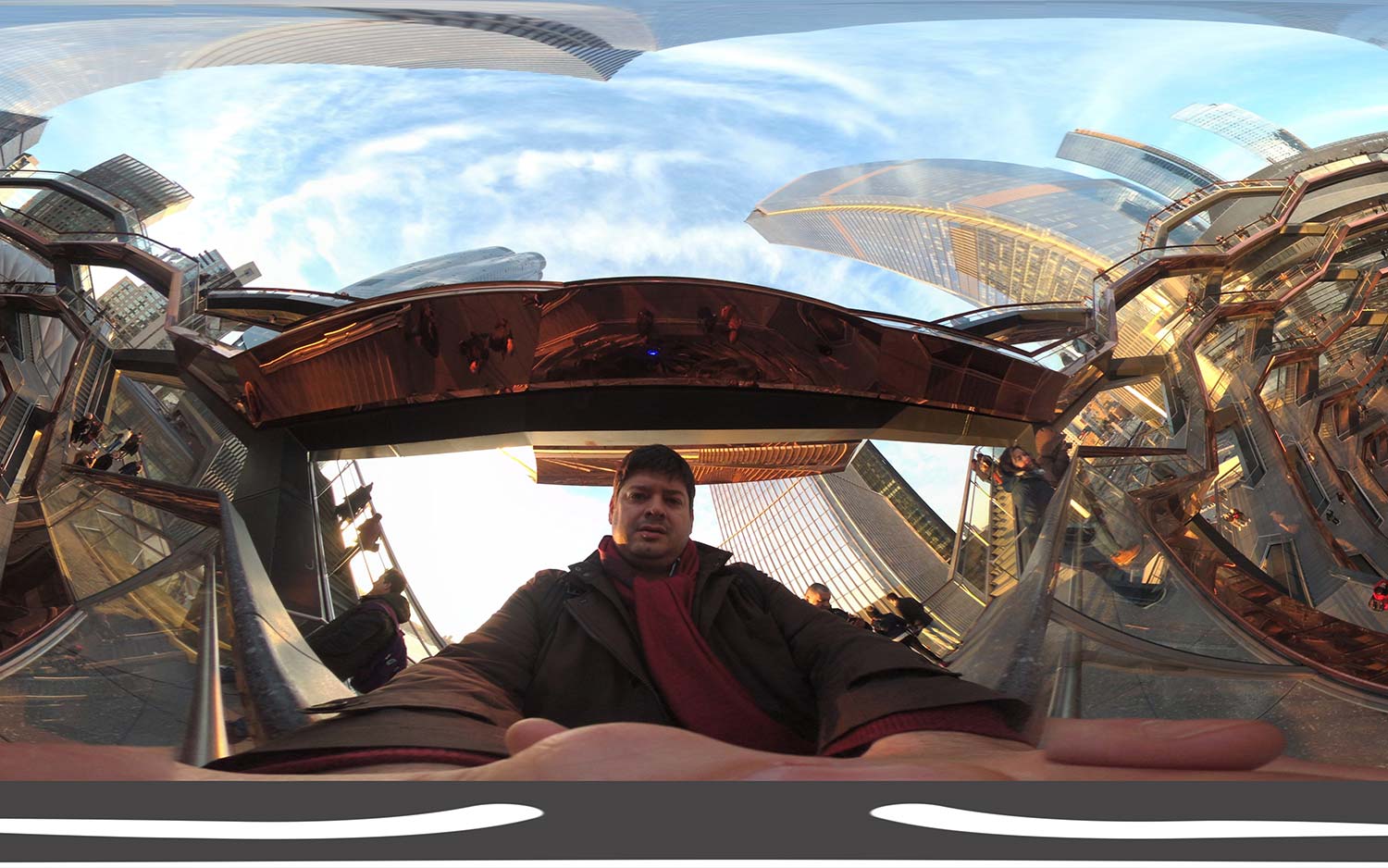
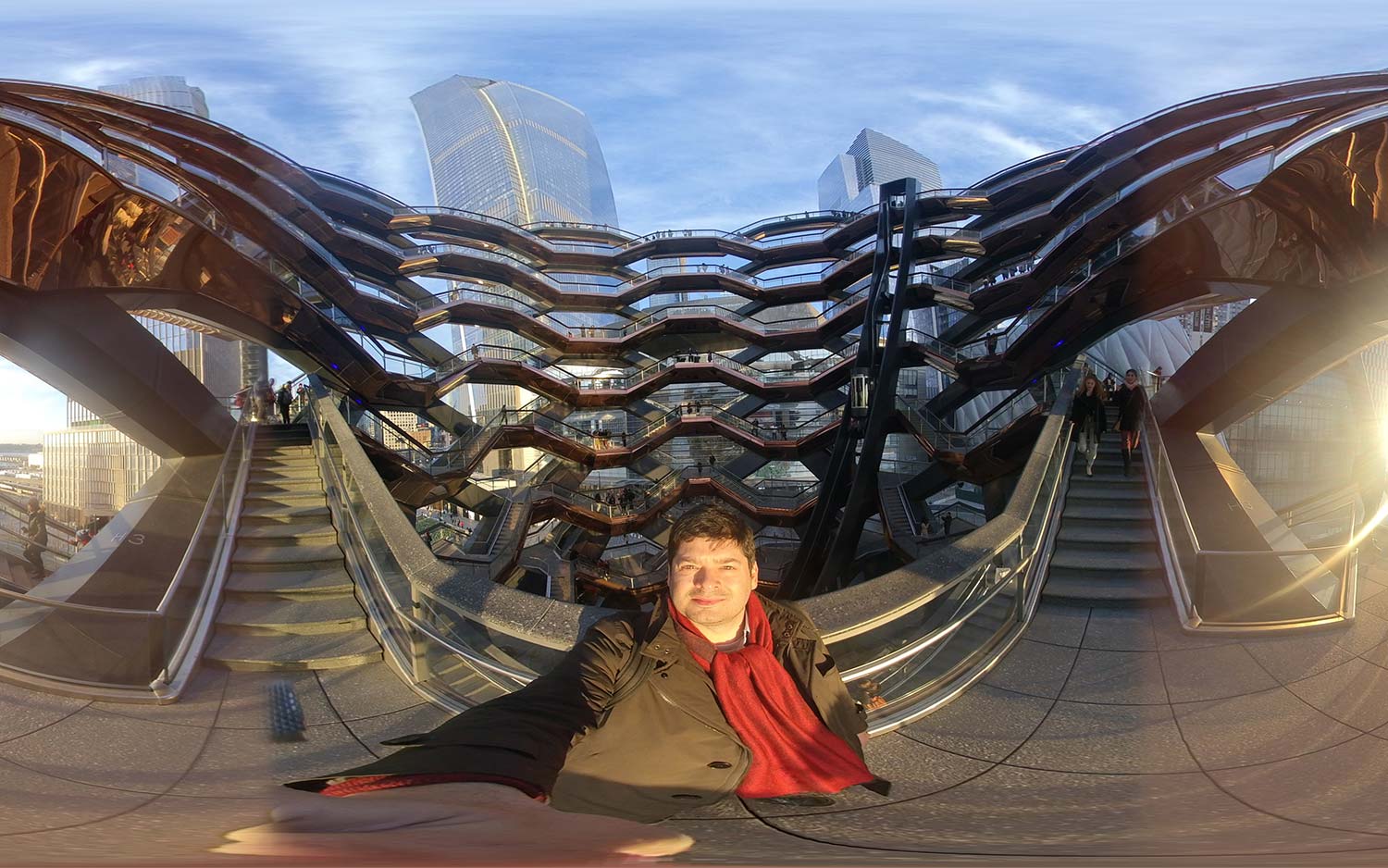
However, in more challenging environs, the Vuze XR outperformed the Insta360. I took a few 360-degree photos in the middle of Grand Central Terminal, where the cameras had to account for the dark interior as well as light streaming through the station's large windows.
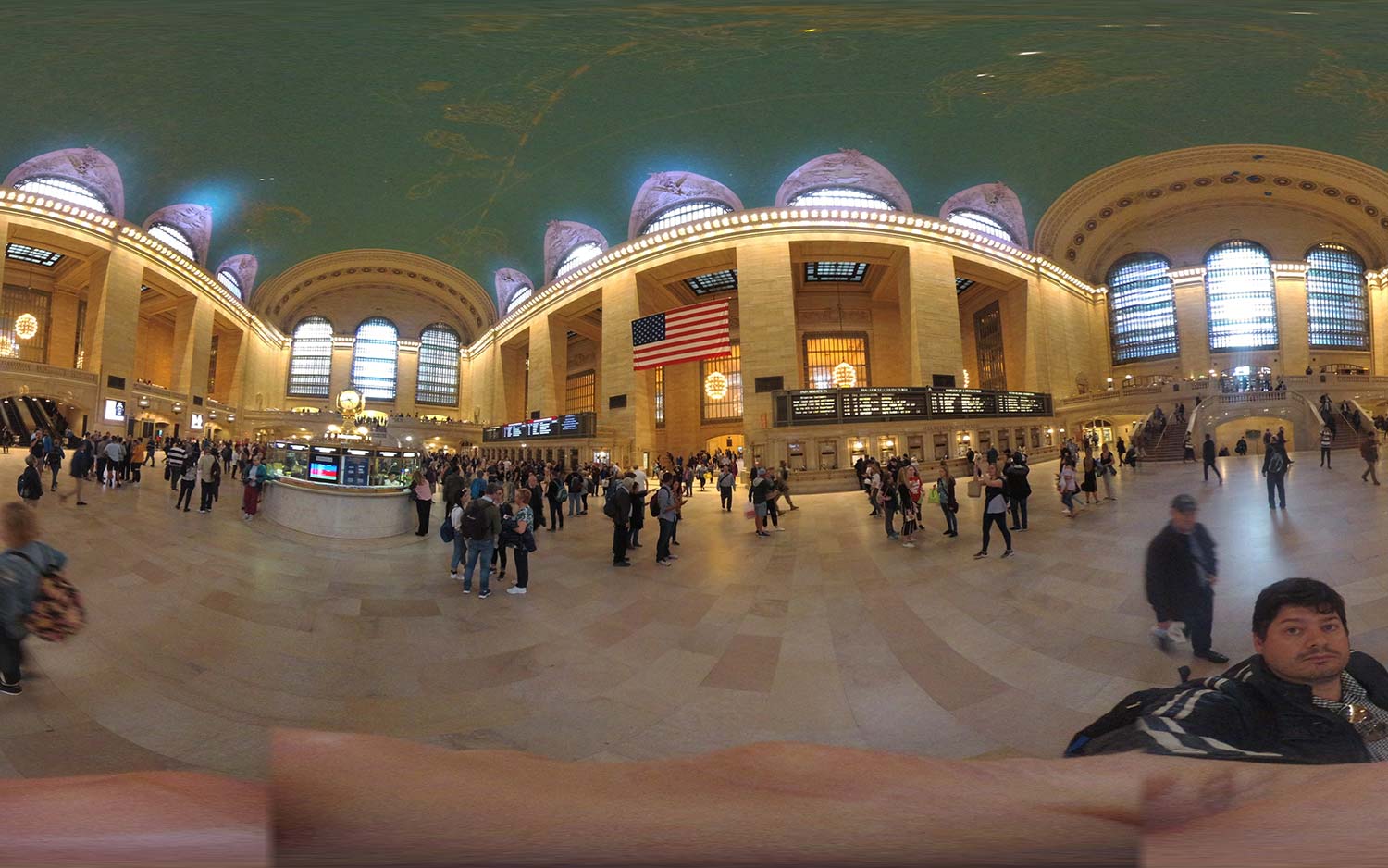
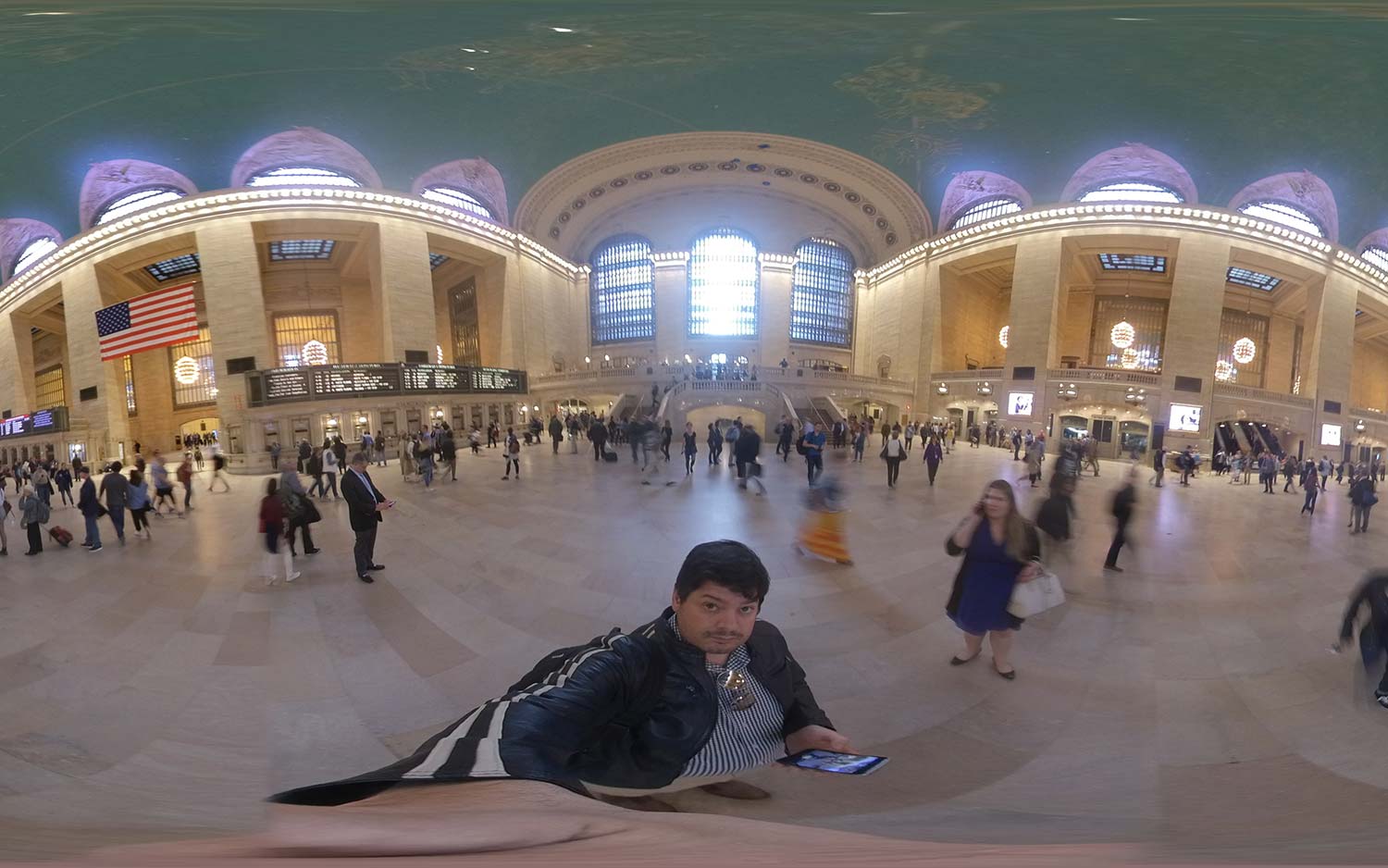
Neither photo was what I'd call great — they were both grainy, and people walking around me were blurred — but the Vuze XR did a much better job at balancing the light. Colors were richer, and the scene didn't look as washed out as with the Insta360 EVO's shot.
App and desktop software
While Vuze's hardware surpasses Insta360’s, the latter's software and app were more functional.
The Vuze XR's app (Android and iOS) has a pretty simple home screen, with three large icons: Connect, Gallery and Settings. Click Connect, and you can control and view the camera remotely with your smartphone (the two devices link via Wi-Fi). Gallery shows you the stuff you've taken, and Settings lets you change things such as video and photo resolution. Here, you can also specify to which platform you'd like to stream live video: YouTube, Facebook or Vimeo.
After you've recorded a video, you can also add sound and voiceovers, adjust lighting and apply filters and effects. One of the best features is being able to set specific areas in a 360-degree video that should be the main point of focus at the start and end points. Oddly, these features are not available on Vuze'’s desktop app.
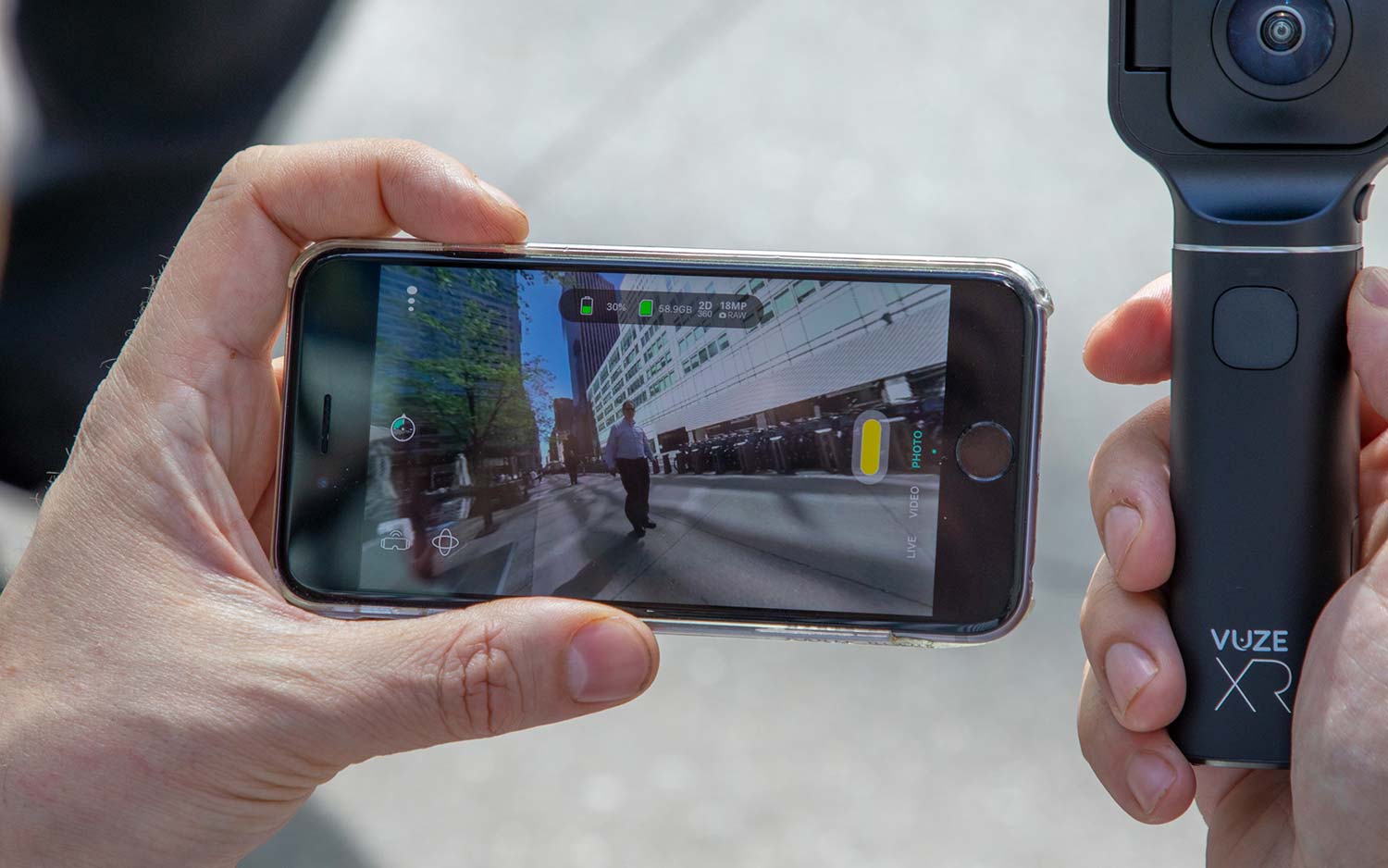
The one major limitation with Vuze's app is that, if you record photos or videos at the Vuze's max resolution of 5.7k, you can't download or view them on your smartphone, and have to use Vuze's desktop app instead. The company said it is working on resolving this issue.
MORE: Best 360-Degree Cameras 2019
Vuze's desktop software can render files from the camera into different resolutions, adjust lighting and colors, and format them for Facebook and Google Maps. Annoyingly, though, you can't view the photos or videos in the desktop app as a scrollable 360-degree image.
In general, I preferred Insta360's mobile app. It doesn't have any size restrictions on photos or videos, and there are more editing options and more camera settings that I could adjust.
Bottom Line
When it comes to hardware, the Vuze XR is much better than the Insta360 EVO. The Vuze is easier to hold, making it a breeze to switch between 360- and stereoscopic modes, and go from shooting photos to video. And, when it comes to the actual photos and video, the Vuze XR holds a slight edge, too. I prefer Insta360's app when it comes to editing my photos and video, but Vuze's mobile app isn't bad at all. And, there is plenty of photo editing and video-editing software out there. If you're looking for a camera that can take both stereoscopic and 360-degree photos and video — and I know there are a few of you out there — the Vuze XR isn't perfect, but right now, it's the best tool for the job.
Credit: Tom's Guide

Michael A. Prospero is the U.S. Editor-in-Chief for Tom’s Guide. He oversees all evergreen content and oversees the Homes, Smart Home, and Fitness/Wearables categories for the site. In his spare time, he also tests out the latest drones, electric scooters, and smart home gadgets, such as video doorbells. Before his tenure at Tom's Guide, he was the Reviews Editor for Laptop Magazine, a reporter at Fast Company, the Times of Trenton, and, many eons back, an intern at George magazine. He received his undergraduate degree from Boston College, where he worked on the campus newspaper The Heights, and then attended the Columbia University school of Journalism. When he’s not testing out the latest running watch, electric scooter, or skiing or training for a marathon, he’s probably using the latest sous vide machine, smoker, or pizza oven, to the delight — or chagrin — of his family.
